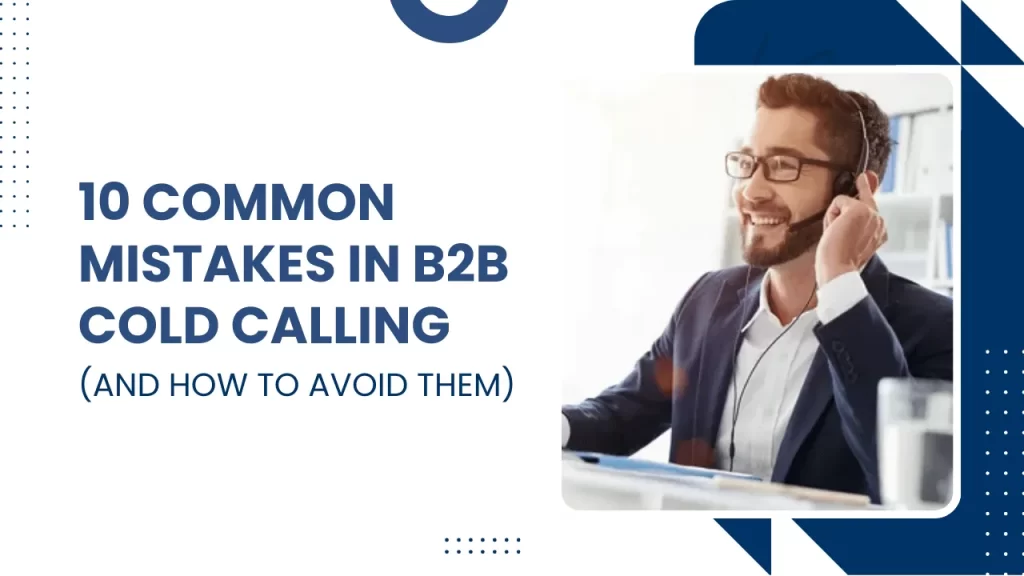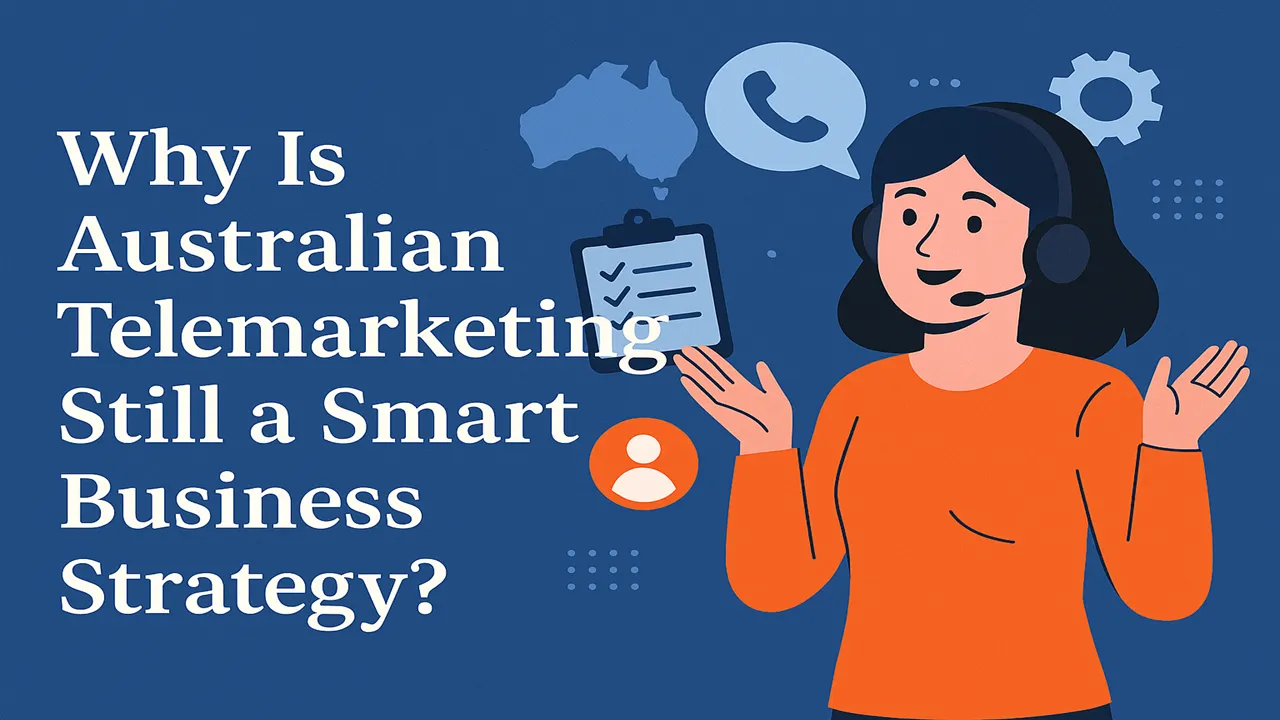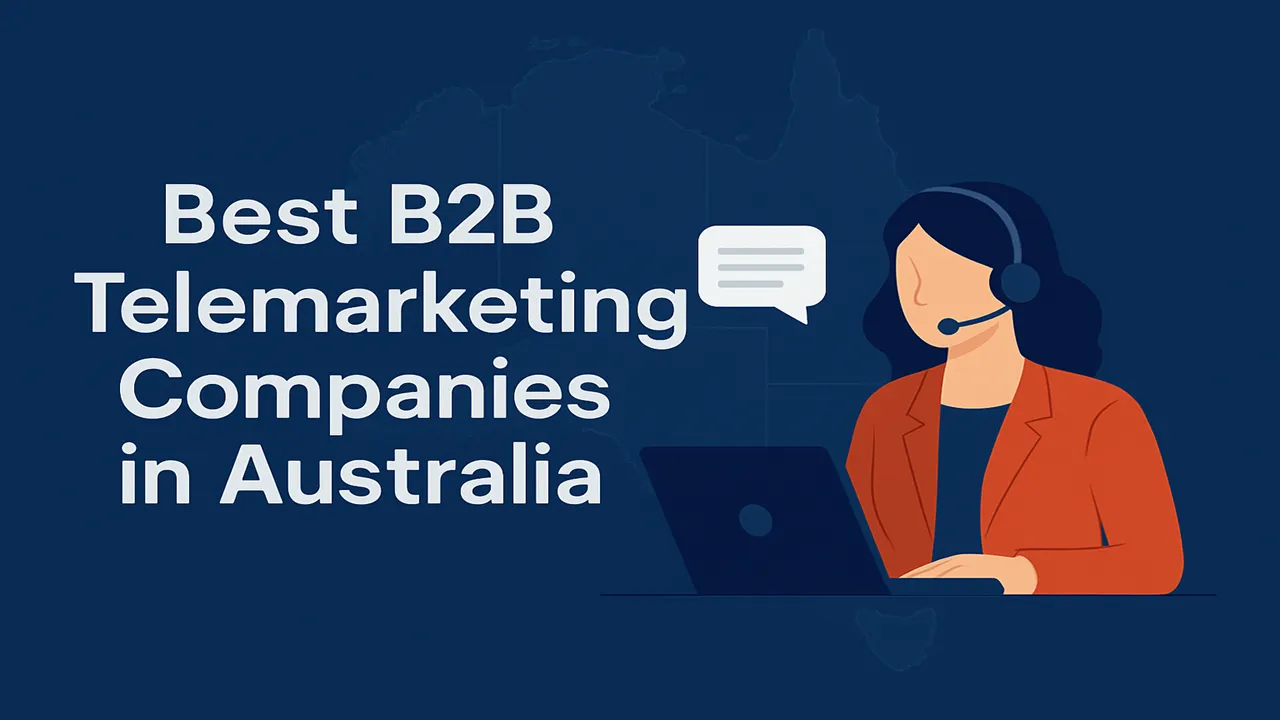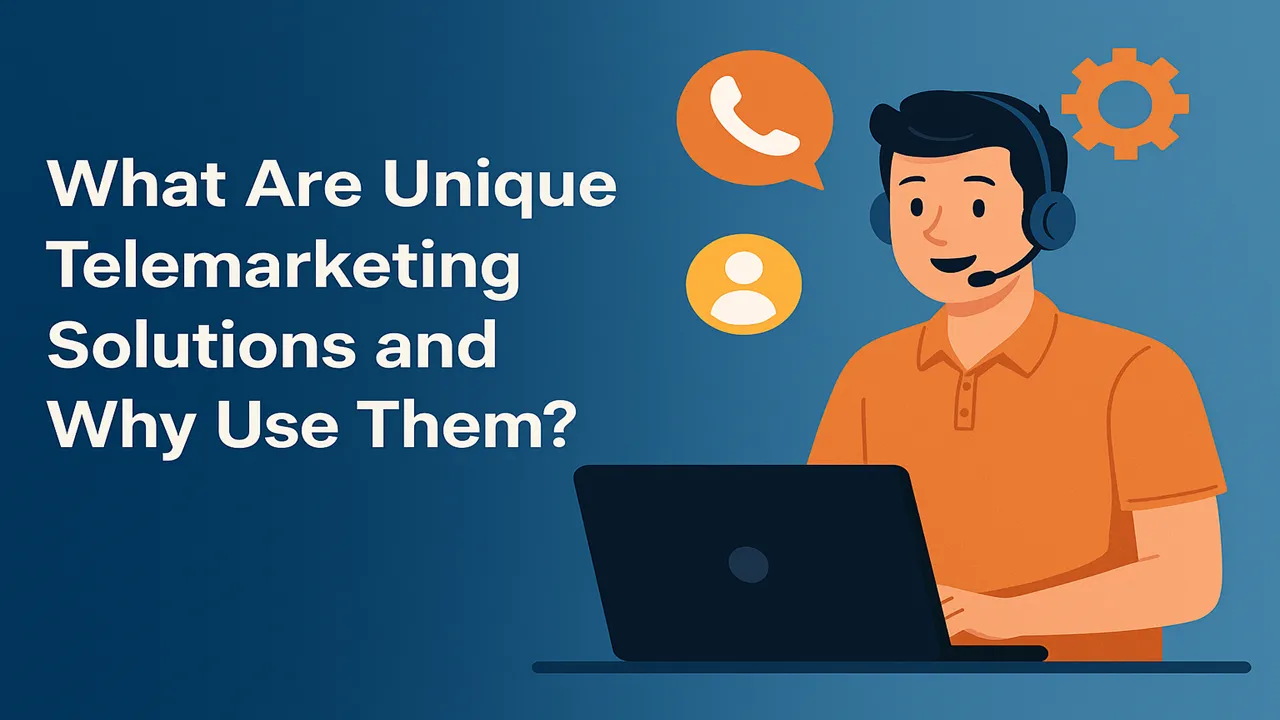Cold calling script for B2B entails contacting another business with the hope of selling some products to him or her. A process of B2B Cold Calling meaning in the form of a prosperous business is beneficial for both. The purpose is to reach decision-makers, gain their attention, and establish a second meeting or a briefing. Cold calling may seem quite challenging. However, it is a good way by which one can identify new leads and create business relationships.
The main strategy of B2B cold calling is all in the preparation. Thus, the salespeople must tell the company what it needs and how they can assist. This is useful when you need to adjust your communication according to the specific type of client.
It is also helpful when the cold-calling professional is aware of some cold-calling statistics that he or she comes across. For example, if data suggest that some days or, only hours are more suitable for calls, schedule your calls at those times. Generating a meeting appointment gives one proper expectation in this field.
B2B cold calling statistics involve reaching out to potential clients thus distinguishing themselves in this type of service. Applying knowledge from cold calling statistics may increase the ratio of converting potential clients into real ones. Using good preparation along with data will assist you in getting more positive outcomes in the B2B market.
How to Overcome Objections in B2B Cold Calling
Removal of the objections is crucial while cold calling in B2B to transform a tough call into a successful one. One can refuse due to factors like cost, time, or lack of a need for the product. So it is necessary to have awareness to address these objections to enhance your chances of victory.
- Be Prepared: It is better to be prepared for typical arguments that may be stated against you once you decide to call. For example, if any of the leads says “We don’t have the budget.” You must say: “I understand, but let me speak about the benefits from the long-term perspective.”
- Listen Carefully: The objections that the prospect gives to the case should be paid maximum attention to. When they reply with ‘not interested at this time’ try to convince them to let you contact them later or enumerate for them the very specific time-limited sales that can turn them around. When you have a full understanding of their objections then it will be easier for you to come up with better responses.
- Use B2B Cold Calling Statistics: Sometimes the prospects show some doubts. So, explain to them how other companies in the same industry benefit from your service. It can make your offer more attractive and it also breaks the ice, so to speak.
- Stay Positive and Polite: Although you can be confronted with numerous arguments, it is proper to be positive and polite. Every “no” is a chance for some tweaking. Then it is more likely to improve the effectiveness of hearing the word “yes” more often.
To sum up, be prepared, listen to the objection carefully, and use some facts such as statistics. Always be positive while dealing with objections in B2B cold calling. Thus, you may increase the likelihood of the further transformation of such calls into potential business.
B2B Cold Calling vs. Warm Calling: Which is More Effective?
Therefore, the knowledge of the difference between B2B cold calling and warm calling is important when choosing between the two.
This is the process of calling people and businesses that have no prior knowledge of your company or organization. Similarly, you try to address a stranger in class and make them turn around, and look at you. This can be especially difficult because, to begin with, you do not know anything about them.
Warm Calling is different. This is when you target those individuals or organizations that have a prior idea about your organizational existence. They have had some level of previous prior idea about your existence at least. For instance, they may ask about services that you provide. Someone may recommend them to you by a mutual acquaintance. These prospects are normally more receptive to your call because they know a little about you.
Warm calling is therefore preferred and it would involve calling clients on the back of an email sent to them. Since the prospect is already familiar with your company, there is a high chance that the customer will listen, and be interested. This means that there is an easier chance of being able to make a sale to a client and hence carrying out relationship marketing.
However, B2B cold calling is also crucial as well. It assists you in getting to new businesses that probably have no understanding of your organization. Cold calling can sometimes take longer to get results; however, it is a good way of searching for new prospects.
In other words, warm calls are more effective because of interest, while B2B cold calling helps identify prospects. This information assists in selecting correct strategies for achieving business aims and objectives in sales.
How to Instruct Your Sales Team for Effective B2B Cold Calling
TrainThe proper preparation of salespeople for B-to-B cold calling is key to getting better results and more sales. B2B cold calling therefore is the process of making cold calls to business companies.
- Clarify B2B Cold Calling: It would be helpful to remind your team that B2B cold calling means calling businesses that have no clue about your company. This is done to catch their attention and open the floor for a discussion with them.
- Provide a Clear Call Script: Don’t pass on an ambiguous or confusing call script to your team. This should give a clue on what to discuss, but as such avoid the discussion to sound or look awkward. A good script can help in dealing with the call. It also ensures that all relevant issues are touched on.
- Practice Through Role-Play: In this particular case then, practice takes precedence. Assign such presentations in a manner that makes the team members take turns between the caller as well as the prospect. It means that they get used to various staking and enhance their skills in response to objections.
- Teach Prospect Research: Teach your team how to find information for prospects before picking up the phone. They should try to know about the prospects concerning the business. They should also try to solve difficulties to have a good approach to presenting themselves.
- Emphasize Active Listening: Emphasize how important listening is during the call. The team members must pay heed to what the prospects say. Then, it will help in enhancing the relationship between the two.
When training your team for B2B cold calling, one must:
- Understand cold calling matrix
- Prepare a clear calling script
- Engage in role-play exercises
- Do proper research
By following these steps, it will level up their cold-calling skills, and result to a better outcome.
How to Avoid 10 Common Mistakes in B2B Cold Calling

To improve your B2B cold calling process, remove common errors given below:
- Not Preparing Enough: Lack of research on the company and individual one is about to call may result in poor pitches. Ensure you understand your prospect if you are to get it right and deliver a proper message.
- Using a Generic Script: When one goes through a standard script the situation is found to be lacking in glamour. From this technique, you can write the script in a way that will be unique depending on your prospect.
- Listening Problem: If you merely pay attention to your pitch, you may miss crucial information from the aspirant. Pay attention to the answers they give and tone them down or intensify the questions in response to that.
- Skipping Follow-Ups: Lack of follow-ups is equally bad, the client deserves better than that. This requires setting reminders to call back or sending different emails to be able to keep up the communication.
- Handling Objections Poorly: Objections become an issue when it comes to handling them as this will affect the effectiveness of the sales. Experience possible responses standing potential objections and inform the leads that their concern is legitimate.
- Calling at the Wrong Times: Calling at the wrong times is also a problem in this process. Understand the proper time to call those key decision-makers of the respective industry and plan the call timings in the right way.
- Being Too Pushy: This often makes prospects run away, with no willingness to listen to any form of selling. Instead, try to establish a rapport in order you force them into compliance.
- Lack of Personal Touch: That is why advertising is always more effective when it appeals to the emotions and sentiments of the masses. Make the communication customized to its recipients in order to lure them in.
- Not Setting Clear Goals: You must set your goals before calling. Use smart objectives like managing a meeting.
- Ignoring B2B Cold Calling Services: Even professional services can give tips and some strategies. You may, for instance, utilize them in enhancing your cold calling.
By enacting these mistakes, it will be easy for one to get good results in the B2B cold calling. In short, it will be a source of increasing the rate of success.
How to Handle Rejection and Stay Motivated in B2B Cold Calling
Rejection and motivation can be other tough issues or problems that should be faced when adopting B2B cold calling. Here’s how to handle rejection and keep your energy up: Here’s how to handle rejection and keep your energy up:
- Understand Rejection is Normal: Lack of acceptance is common in B2B cold calling which is why it should not be a shock to call prospects. Let me repeat that not all calls are going to eventually lead to a sale, and that’s perfectly fine. Regard rejection as part and parcel of the process of calling.
- Don’t Take It Personally: It may be good to note that failure or rejection has nothing to do with one’s worth, ability, or competence. Most of the time, the rejection results are because of schedule or just compatibility and not ability. Be positive and keep in mind that, what they have said ‘no’ to today they might say ‘yes’ to tomorrow.
- Learn from Each Call: Managing rejection as a possibility. Consider each call to identify what may have to be done differently or better. It enables you to make several attempts towards the objective with a better technique hence enhancing the likelihood of a favorable outcome.
- Set Realistic Goals: Define realistic goals such as conversing with a customer or getting feedback from the client. This prevents one from losing focus and offers a better perspective of the extent of developments.
- Take Breaks and Recharge: People should not allow the rejection to pull them down or limit their attempts at approach. Try to take a break and relax your mind or your body at least once in a while. This does not make you bored or tired and you are fully charged when making the calls.
Therefore, managing rejection in B2B cold calling, making sure that
- Take a pause
- Be rejection-proof
- Rejection is expected.
- Make reasonable goals
- Gain something from each call cold calling script for b2b
To sum up, it would not be wrong to say that you will achieve the desired results from this act.
Top Techniques for Building Rapport in B2B Cold Calls
A good B2B cold-calling procedure requires clients to have the ability to form a positive relationship with the ones they call. Here are some of the top tactics for your help in creating rapport.
- Ensure Warm Greeting: Greet your customer warmly before self-introduction. Have a smile on your face while speaking to the prospect even though he or she cannot see you. It will make your voice even more pleasant to hear.
- Do Your Research: If you’re calling, take a minute or two and research the company and the person you will be speaking with. Say something about their business or their latest achievement to show your “research” and real interest.
- Listen Actively: As we will deal with the prospect, we must listen attentively to what the prospect says. Try to mirror their input and show your concern about it by answering their comments. This makes them develop confidence in you and lets them know that you are concerned about their issue.
Essential Strategies for Building Rapport in B2B Cold Calling
- Ask Open-Ended Questions: Let them go on with the information by asking open-ended questions about their struggles and objectives. This leads to a probably, more fruitful conversation and may allow you to tailor your pitch more to that individual.
- Find Common Ground: Look for common grounds, or at least a common topic. Whatever you find that you have in common make sure to let that shine through on the call to the client. It gives an illusion of an affable and familiar interaction. This is the demand of the audience when they move to YouTube.
- Be Authentic and Honest: Do not do things others may not agree to or say things that are not entirely the truth. People in general, especially the prospects, can feel when the other person is pretending to be authentic. Authenticity tends to work with trust and also ensures that the conversation will not be stiff at all.
- Know the Best Time to Cold Call B2B: Timing, like said many times over, plays a crucial factor. Find out if there is a peak hour when it would be ideal to contact your industry’s decision-makers and then make those calls. That bumps the chance of a good talk.
So, the process of laying rapport when dialing in B2B cold calling involves:
- Listening attentively
- Giving a warm greeting
- dialing at the right time.
- Researching your would-be customer,
- Asking questions with yes or no reply
These methods will help you to achieve better qualitative relations as well as increase the originative cold calling results.








